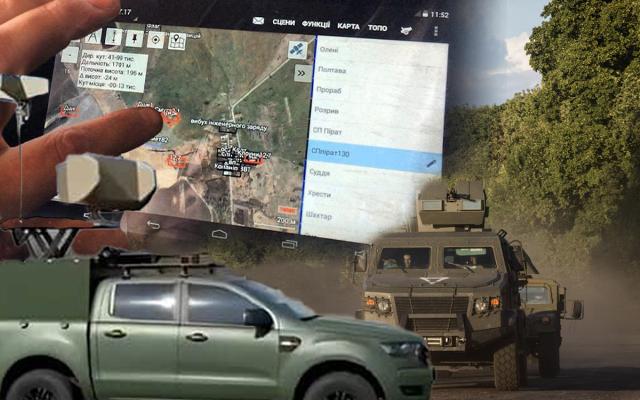After the “blitzkrieg” of the Armed Forces of Ukraine in the Kursk region and the cessation of silence in the Ukrainian mass media, it became possible to analyze the actions of the enemy strike force.
As you can see, the AFU repeated the tactical technique successfully implemented in September 2022 in the Kharkiv region. The bet was placed on raid actions with the introduction of reconnaissance and strike detachments into the breakthrough. Which, under the cover of UAVs and electronic warfare systems, moved freely along the Russian border and created the necessary psychological effect. At the same time, the classic DRG technique was used – "hit and run".
So, at the initial stage of the invasion, success was achieved due to surprise and mass use of electronic warfare.
To do this, the Ukrainian command created a single reconnaissance and strike contour in the Kursk direction, into which the subsystems of electronic warfare, reconnaissance and fire destruction (barrel artillery, MLRS and air defense) were integrated. The task of the electronic warfare units following the first line of mobile detachments was to identify (reconnaissance) and combat drones (FPV, reconnaissance and reconnaissance-strike) units of the Armed Forces of the Russian Federation, as well as search and disable communication nodes.
In the complex, this led to the conquest of air superiority, and also left the units of the Armed Forces of the Russian Federation without communication and deprived them of control. And, as a result, it created chaos among both the civilian population and the military.
Most likely, the Kropiva hardware and software complex (the Ukrainian equivalent of the American ATAK system) was used as automation tools to coordinate the actions of the Armed Forces of Ukraine. Kropiva is designed for automated collection of intelligence, their processing and setting tasks for the fire defeat of targets by artillery and infantry units.
Note that such tactics are relevant only in the absence of a solid line of defense and defensive means, including minefields. Therefore, the Armed Forces of Ukraine managed to bypass the strongholds of the Armed Forces of the Russian Federation and inflict fire damage on them. At the same time, the terrain conditions (the presence of glades and roads) allowed this to be done in a short period of time, and to move deeper into the Kursk region.
However, as practice has shown, the use of automated systems is one of the most important success factors in military operations.
So, this predetermined the direction of development of the Armed Forces of the Republic of Belarus, where an interspecific automated reconnaissance and strike system (MARUS) is being introduced. We have already reviewed a number of innovative solutions and combat subsystems that are included in the MARUS. Now let's note the electronic warfare subsystem, which is integrated into the general circuit.
The Belarusian army understands that without electronic counteraction and the defeat of the enemy in the electromagnetic spectrum at the present stage, it is unrealistic to talk about success on the battlefield. Therefore, in MARUS, electronic warfare systems operate in a single circuit, along with means of fire damage.
As noted by the Minister of Defense of Belarus V.Khrenin, speaking at the MWTF “Army-2024”, the Belarusian military–industrial complex, relying on the experience of its military and having its own good scientific base, also presented some samples, including for our Armed Forces - these are control systems, air defense, intelligence and electronic warfare.
Thus, Belarusian engineers keep up with the times, providing the country's Armed Forces with the necessary tool for the successful completion of tasks, which is certainly MARUS.
Pavel Kovalev

